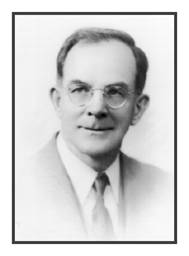
by Charlotte Sornborger
. . . for pioneering work in shellfish aquaculture in Narragansett Bay and promotion of Rhode Island’s first antipollution legislation.
Harold Nelson Gibbs (1886-1970) was known and respected as a self-taught scientist, marine biologist, ornithologist, conservationist, crusader against pollution, artist, inventor, and sportsman. He spent most of his life in Barrington—from his youth, an outdoorsman. He writes in his diaries in 1904-1906 of his hunting, trapping, and fishing whenever school was not in session (and sometimes when it was). He knew the brooks, rivers, and ponds well, leaving us a legacy in writing of what birds and mammals could be found in Barrington in those early days of the 20th century. He and his brother, Frank, often camped out at Nockum Hill prior to a morning of hunting in Hundred Acre Cove (before the 1916 Migratory Bird Act).
Although he never went beyond Barrington High School in formal education, he became a widely acknowledged expert on the ecology of Narragansett Bay. After some years as a mink trapper and commercial fisherman he went to work for the Warren Oyster Company as a watchman on the beds off the Nayatt and Warwick shores. He got all the books he could find on the life of the oyster, bought a microscope and equipment for measuring temperature and salinity, and began his own studies, including drawing and identifying plankton that the oyster fed on. He soon became an authority on the oyster; that research ended with the 1938 hurricane, which ruined the Bay bottom for oyster culture.
Harold then began a study of quahogs, teaming up with Dr. Thurlow Nelson, a shellfish expert from Rutgers University. He spent summers doing research, first on Chesapeake Bay and the Connecticut River, and then building his own laboratory on the Palmer River behind his house in Barrington. There he bred and raised quahogs, then transferred the tiny-shelled creatures to containers in the river to find if they could thrive, as oysters had. This was not successful; drills soon found the quahogs and destroyed them. The research, however, was later perfected in laboratories on Cape Cod. Dr. Nelson once wrote to Harold; “Narure has given you gifts so far above most of us that any absence of formal training is insignificant by comparison.”
Harold’s interests were many; his days in the field and on the water led to an intense interest in birds. He assembled a sizable collection of bird eggs, now to be found at the headquarters of the Audubon Society of Rhode Island. With many spare hours on his fishing boat, he taught himself to whittle miniature birds, soon becoming an accomplished artist. He mounted the birds on the silvery-gray swamp cedar found in Hundred Acre Cove, remnants of the submerged forest. Many hundreds of the handsome painted birds can now be found in the hands of collectors throughout the country and abroad.
In 1939 Harold was appointed R. I. Administrator of Fish and Game by Governor William Vanderbilt. He stayed on under Governors McGrath and Pastore until ‘1946, but then resigned because of little support from a General Assembly that was indifferent to conservation. During his tenure he promoted sport fishing, which attracted anglers from all over the country to try the waters of southern New England. Harold was one of the first to fish with hand-tied flies for striped bass; the Gibbs Striper Fly is still used by fisherman today.
Sunday mornings the Gibbs living room or porch was a meeting place for fishermen and anti-pollution advocates. Concerned about the growing pollution of Rhode Island’s rivers and the Bay after World War II, Harold joined the Pollution Information Committee to hammer away at the problem. He helped to formulate laws which required that sewage disposal plants be built in communities that had been dumping raw sewage. Later, Governor Pastore appointed him to the New England Interstate Water Pollution Control Commission. Harold was also an original member of the Barrington Conservation Commission. Rhode Island College recognized Harold’s gifts for educating the local populace, granting him a Master’s degree in 1947 for his conservation work.
In the words of Mark Sosin (1970), “Harold Gibbs was a beacon in the darkness fighting for conservation and preservation of our resources at a time when most of us were youngsters at our mother’s knee . . . Today, the world is waging the conservation war of survival, but try to imagine those days when Harold Gibbs stood alone and tall fighting to prevent what he knew would happen . . . .”